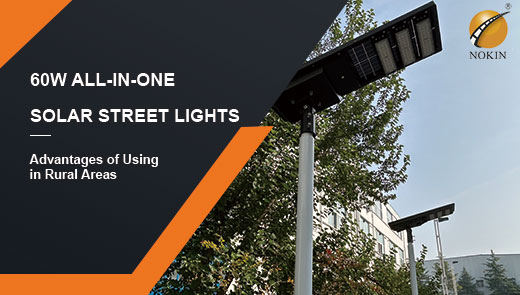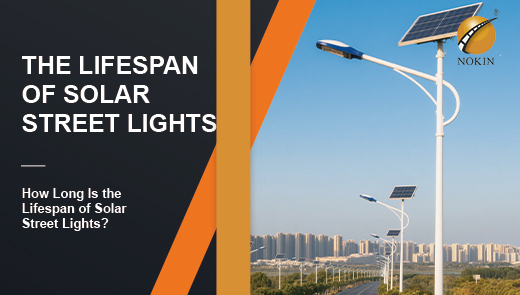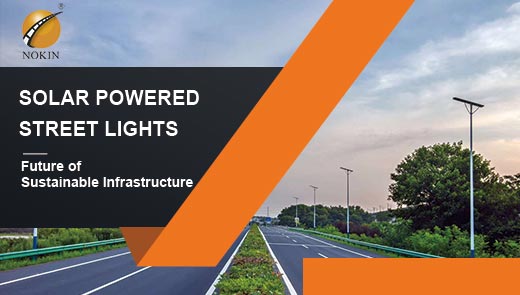How Long Is the Lifespan of Solar Street Lights?
The lifespan of a solar street light is a dynamic value determined by the synergistic performance of each component, and the overall lifespan is usually 10-20 years, depending on the quality of the components, environmental suitability and maintenance level. The following is a detailed analysis of the technical principles, failure triggers and optimization solutions.
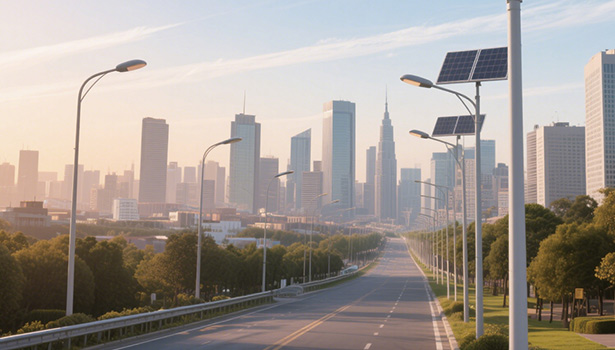
Lifespan of Each Component
Lifespan of a solar street light is determined by the shortest-lived component, and the performance difference of each core component directly affects the overall durability.
Solar panel
As the core of energy conversion, solar panel is composed of silicon wafers, with a theoretical lifespan of up to 20 years, but its actual performance is highly dependent on environmental maintenance. If the solar panel is blocked by trees or buildings for a long time, or if dust or snow accumulates on the surface, the efficiency of power generation will be significantly reduced - 10% of the area blocked can result in a 50% loss of efficiency, and 1mm of dust can result in a 20%-30% reduction in efficiency. Regular cleaning (quarterly) and avoidance of shadows are key to extending their life, and proper maintenance can bring them closer to their theoretical lifespan, while the opposite can shorten them to 10-15 years.
LED lighting fixture
LED lighting fixtures have become the mainstream choice due to their low light decay (only 3% per year) and high efficiency (1/3 of the energy consumption of traditional fixtures). Their theoretical life span reaches 50,000 hours (about 13.7 years based on 10 hours of daily use), but the actual life span is greatly affected by the heat dissipation design, and high-quality products with good heat dissipation can be used stably for 8-10 years.
Battery
Battery is the core component with the shortest lifespan in the system, and there is a significant performance difference between old and new technologies. Traditional lead-acid gel battery cycle times only 300-500 times, the typical life of 3-5 years, in the -10 ℃ low temperature environment, capacity retention rate of less than 50%, and the depth of the discharge capacity is weak. While the lithium iron phosphate battery cycle times ≥ 2000 times, can be in - 20 ℃ ~ 60 ℃ wide temperature range to maintain ≥ 80% capacity, deep discharge capacity of more than 80%, life expectancy extended to more than 5-8 years, by virtue of the high stability of the municipal engineering become the first choice.
Controller
As the “nerve center” of the system, the controller assumes the key responsibility of intelligent management of charging and discharging. High-quality controllers are designed with waterproof grade above IP65, which can resist the intrusion of heavy rain and moisture, and with precise electronic components, the trouble-free working life can reach 6-8 years, effectively guaranteeing the safety of battery charging and discharging. Inferior controllers are often rough, poor waterproof sealing and unstable program logic, easy to water short circuit or charging and discharging control failure, rapid failure in 1-2 years, not only lead to lamps and lanterns on strike, but also accelerate the battery loss due to overcharging and over-discharging, significantly shortening the overall life of the system.
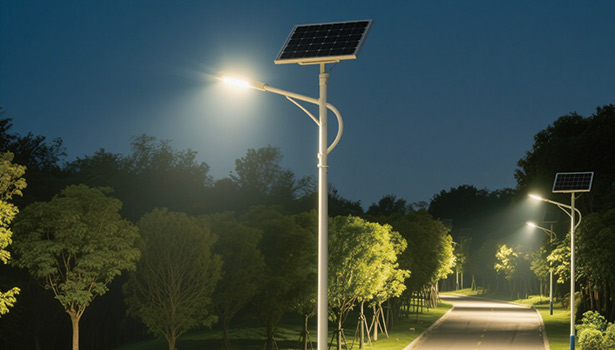
Why do my solar lights not last long?
Too long cloudy and rainy days
Too long cloudy and rainy days or insufficient light, solar panels due to weak light intensity, insufficient time, light conversion efficiency is greatly reduced, the daily charge may be only 30%-50% of the power consumption of the lamps and lanterns, resulting in the battery is continuously in the “not enough to cover the loss” of the state of power. In addition, the accumulation of dust, bird droppings or snow on the surface of the photovoltaic panels will form a physical shield, only 1mm thick dust can make the power generation capacity drop 20%-30%, if encountered in heavy rain or snowstorms, but also due to the impact of external forces may lead to the panel rupture or line short-circuit, and further loss of power generation capacity, and ultimately make the lamps and lanterns due to energy depletion and extinguished.
The decreases of storage battery capacity
As the energy storage core of the solar lamp, the performance degradation of the battery is the main reason for the shortening of the lighting hours. The cycle life of colloidal lead-acid battery is only 300-500 times, and after 3 years of use, the internal plate sulfation is serious, and the capacity often drops below 30% of the initial value, and the lighting time at night may plummet from the designed 10 hours to less than 3 hours; although lithium batteries have more than 2000 cycles, but after 5 years, the activity of the electric core decreases, and the capacity generally drops to 70%-80%. In addition, over-charging or over-discharging will accelerate the aging of batteries, for example, long-term over-discharging of lead-acid batteries will lead to irreversible sulfurization of the plates, and even if they are charged, they will not be able to recover their capacity, and will eventually lose their energy storage function.
Solar photovoltaic panels are dirty or damaged
Solar photovoltaic panels are exposed to the outdoor environment for a long time, airborne dust and industrial pollutants will gradually be deposited on the surface, forming a dense shielding layer and blocking the incoming light. In dusty areas, uncleaned PV panels can lose 5%-10% of their power output per month, with a cumulative efficiency loss of more than 50% after one year. If the lamps still can't work normally after cleaning, the battery cells may be burnt due to hot spot effect, the welding point is off or the glass panel is cracked, these internal damages will lead to the PV panel can't produce enough voltage (normal no-load voltage ≥18V), then you need to locate the fault point through professional testing and replace the damaged components in time to restore the power supply ability of the system.
Product quality problem
Some middlemen may use poor quality components, such as recycled lead-acid batteries, inefficient PV panels or fragile controllers, for profit. These products may look normal at the beginning, but they have a short lifespan and high failure rate. For example, a solar light from an informal manufacturer may not light up within 1-2 years due to aging components or design defects, and lacks reliable after-sales service support.
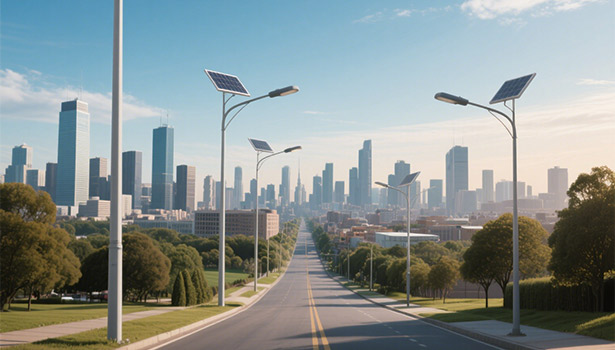
Factors That Affect Street Light Lifespan
Controller Performance and Stability
If the controller is damp or the program is disordered, it will lead to overcharging or overdischarging of the battery: overcharging will accelerate the volatilization of lead-acid battery electrolyte, resulting in bulging; overdischarging will cause the polar plate to sulfurize, which will shorten the number of cycles dramatically. For example, if a lead-acid battery is over-discharged for a long period of time, the life span of the battery may plummet from 3 years to 1.5 years, and over-charging of lithium batteries may also lead to safety hazards.
Light Energy Utilization
Even a small amount of shading (e.g., a tree branch covering 10% of the panel area) can result in a 50% reduction in efficiency and cause a “hot spot effect” that burns out localized cells. Regular cleaning of PV panels can keep average annual efficiency degradation to less than 2%, whereas unmaintained modules can have average annual degradation exceeding 5%, with significant cumulative losses.
Light Source Type and Thermal Performance
Traditional high-pressure sodium lamp due to the limitations of the light-emitting principle, the life expectancy of only 1-2 years, and the speed of light decay, the use of 1 year after the brightness may drop to the initial value of less than 50%, has been gradually replaced by LED light source. LED chip light decay and temperature is positively correlated, the working temperature rises 10 ℃, the speed of light decay accelerated by 15%, if the heat dissipation caused by the chip in the long term at a high temperature of 80 ℃ or more, the life expectancy may be shortened to less than 5 years. If the chip is exposed to high temperature above 80℃ for a long time due to poor heat dissipation, the life span may be shortened to below 5 years. High-quality heat dissipation design through the aluminum fins, heat pipes and other structures to quickly export heat, the chip temperature control in the 40-60 ℃ reasonable range, which can extend the life of the lamps and lanterns to 10-12 years, significantly improve the stability of the lighting system.
Environmental adaptability of storage battery
The performance of lead-acid battery decreases greatly in cold areas, while lithium battery can still maintain more than 80% capacity in -20℃ environment. In addition, if the battery pack is not properly waterproofed during construction, the risk of electrolyte leakage or short-circuit will directly threaten the life of the battery and even cause safety accidents.
Maintenance Professionalism
Lack of maintenance of solar street light system, PV panel dust accumulation, battery interface oxidation, controller parameter drift and other problems will shorten the overall life by more than 30%. Regular maintenance (e.g., quarterly cleaning of PV panels, annual testing of internal resistance of batteries) can detect 80% of potential failures in advance, significantly slowing down the aging of components.

How Can I Make My Solar Lights Last Longer?
Invest in Quality
Priority is given to the “Li-ion battery + monocrystalline PV panels + intelligent MPPT controller” combination, although the initial purchase cost is 10%-20% higher than the low-end configuration, the whole life cycle maintenance cost can be reduced by more than 30%. Municipal projects are recommended to use lithium iron phosphate batteries (life expectancy ≥ 5 years), while civil scenarios can choose cost-effective solutions according to the budget, but lead-acid gel batteries should be avoided.
Place Your Solar Lights Properly
When installing PV panels, make sure that the panels are free of shading throughout the year, and the average daily light duration is ≥4 hours. In the northern hemisphere, PV panels should be oriented to the south, and the tilt angle should be the same as the local latitude (e.g., the tilt angle should be set to 30° at 30° north latitude), so as to maximize the efficiency of light energy absorption. At the same time, avoid windy and waterlogged areas to reduce the physical loss of the module.
Regular Maintenance
Establish a regular maintenance mechanism: clean the PV panels quarterly with a soft cloth dipped in neutral detergent (no hard objects are allowed to scrape), check the controller charging and discharging logic and clean the oxidized layer of the interfaces every six months, and use a multimeter to measure the voltage and internal resistance of the batteries every year, and record the trend of attenuation. Data shows that the battery life can be extended by 2-3 years if the system adheres to annual maintenance.
Intelligent Early Warning
Installation of IoT monitoring module, real-time tracking of voltage, temperature, light intensity and other key parameters. For example, when the internal resistance of the battery increases by more than 20%, it automatically warns of replacement, or when the efficiency of the PV panel falls below the threshold for 30 consecutive days, it prompts cleaning or replacement of the module, thus reducing the cost of troubleshooting and the frequency of manual inspections through early intervention.
The long-lasting operation of solar street lights relies on the scientific configuration and continuous maintenance of high-quality components - the selection of lithium batteries, high-efficiency photovoltaic panels and intelligent controllers, together with regular maintenance, can make the system work stably for more than 10 years. For users, avoiding the trap of low-priced and low-quality products, choosing regular manufacturers to work with, and establishing an annual maintenance program are the keys to unlocking the energy-saving benefits and economic value of solar street lights. Through full-cycle management, every street light can become a durable and reliable “bright pivot” in the construction of low-carbon cities.

